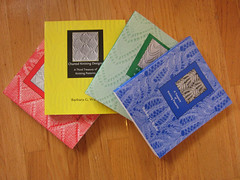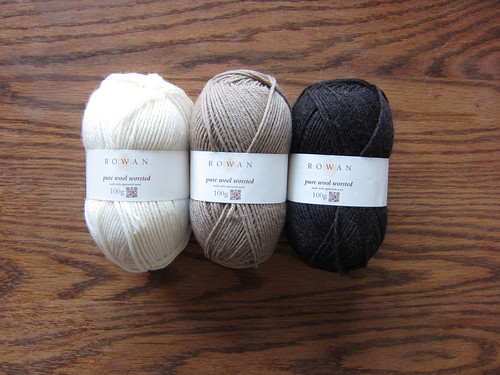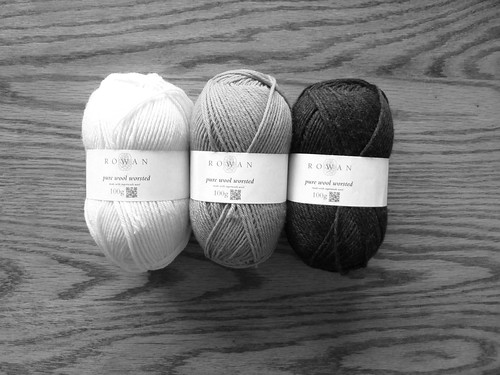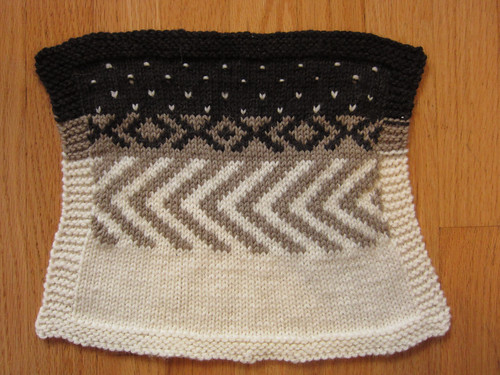A few weeks back, I introduced a new project of mine with a little backstory. I left off that post with a picture of my initial sketch and key design elements.
Now, before I get too heavily invested in choosing specific motifs and stitch patterns, I like to work out a few swatches with the yarn. Sometimes I’ll start swatching motifs immediately, if I know I’m going to be working with a yarn with which I am familiar. This begs the question: What yarn am I going to use for this sweater?
I wanted something in the 20-22st/4″ range (DK to worsted), because I didn’t want it to be too bulky (but also not so fine that it takes forevvvvvver). I prefer to work in wool, or wool blends, however the future wearer of this sweater does have moderately sensitive skin, so nothing too “traditional” – that means a superwash or merino wool yarn. I wanted to have a good range of colours to choose from (since I knew I would be working with neutral colours, it was very important to have enough colours to choose from). And finally, I wanted it to be relatively inexpensive, so none of my favourite top-shelf fancy hand-dyed, luxury blends for this project.
My final choice? Rowan Pure Wool Worsted. I’d consider it a light worsted, it is reasonably priced, comes in a huuuuuge number of colours, is superwash, 100% wool, and I kind of just wanted to give it a try.
Choosing colours… Well, you may remember my earlier post on colour theory (note to self: work on part 2 of that series) where I focused on the importance of considering colour value when knitting colourwork. Well, knowing that I was going to be working three yarns that did not differ greatly in hue – paying close attention to value was especially critical for this project!
I basically just pulled out all the neutral options we had, and started by getting rid of the ones that didn’t appeal. I immediately tossed the pure white and dark black, as I was worried they would be too dramatic. None of the greys were really calling to me, and my partner had expressed a desire for warmer tones in the sweater, so I opted to stick to creams and browns. I slowly whittled it down to three – no real rhyme or reason beyond ensuring I had a high, low, and mid valued yarn, and three colours that looked nice together.
For the record, the colours I chose are 102 (cream), 103 (light brown), and 110 (dark heather brown).
Next up was swatching. Well, the first phase of swatching. When I work on a large project, it is often an iterative process. In this case, I had a loose idea of the kinds of motifs I wanted, so I just drew from my mental stockpile of easy patterns and went nuts. I always like to swatch with the yarn in plain stockinette (sometimes in a few needle sizes), and then in each of the stitch patterns to be used in the item. Here, I had examples of low density (the lice motif at the top), high density (the crosses and naughts), and mid density (the chevrons) stranded colourwork motifs. This photo was taken post-blocking, and you can actually see quite clearly just how much firmer the fabric is over a high-density motif – this is clearly going to be a structural concern when planning a multi-patterned sweater (at least 5 or 6 different motifs).
Well, I think I have rambled on sufficiently for today… But as a teaser for next time, I’m breaking out my design arsenal…




